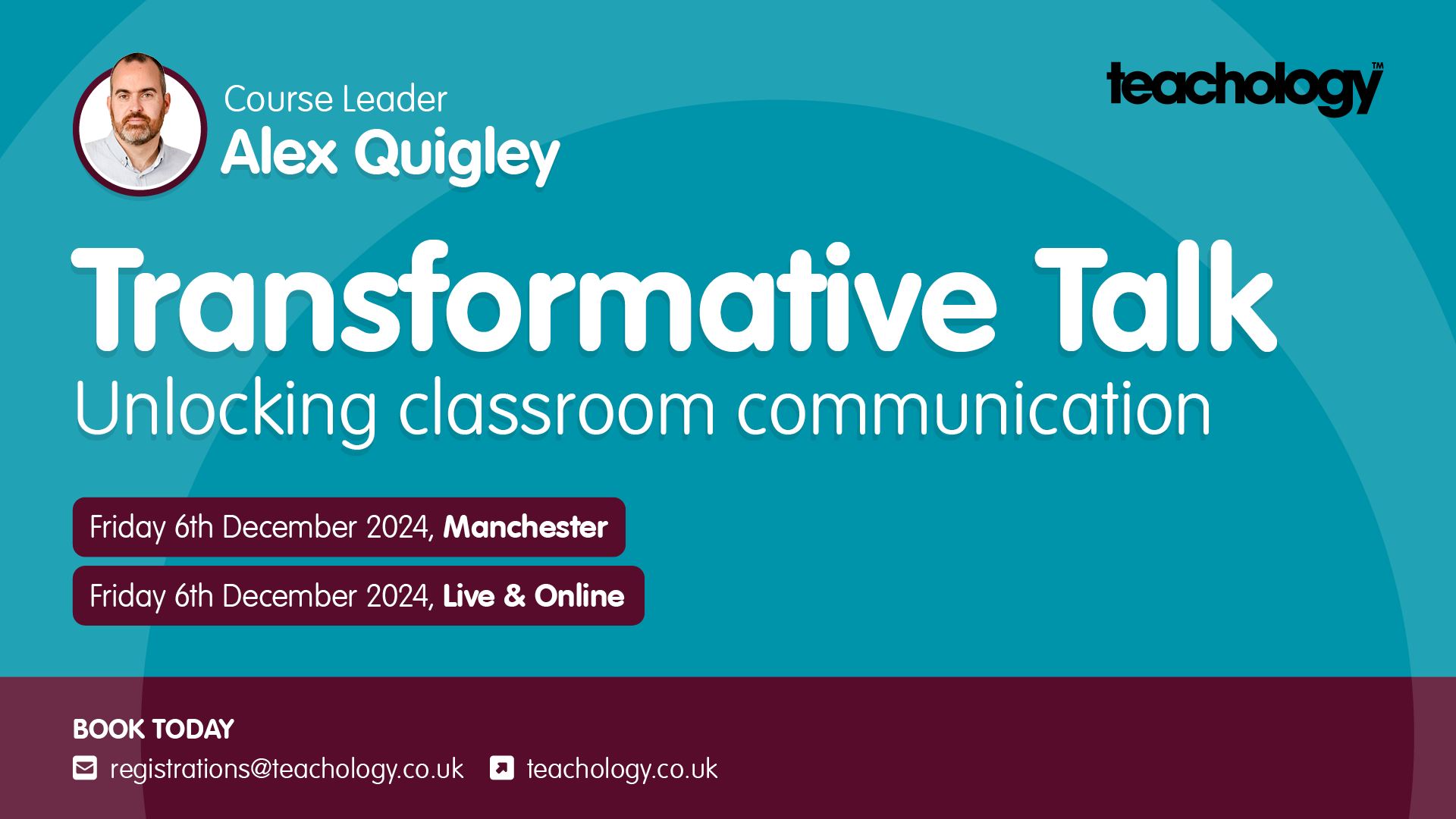We are in an age of communication. We are connected more than ever before: with the ability to talk to friends and family across the world in an instant. You can publish your unfettered views on X, you can talk about and share your best life on Instagram, or create 30 second videos about nothing much important, all in an instant.
When we think of communication, we promote and prioritise talk. We celebrate speeches. We train pupils to debate and discuss. Talk and instant communication may be easier than ever… but what about prioritising learning how to listen?
In our age of mass, never-ending communication, listening may just be the lost art that we need, in the classroom and beyond.
Teaching listening
When I started teaching, many moons ago, I didn’t give a second thought to teaching pupils how to listen. It felt like the most natural thing it the world. It is just what you do when you are attempting to learn. Right?
Of course, very quickly I recognised that pupils needed training in ‘active listening’ – not just developing their ability to talk. The seemingly natural behaviour of listening for information, responding to peers, along with the little non-verbal responses to encourage listening and fruitful talk, all needed to be modelled and promoted in the classroom.
Students are expected to listen in the classroom and in the university lecture hall, as well as digest presentations in the workplace, or podcasts on their way home. If we teach effective listening with explicitness, we may maximise learning in marginal but significant ways.
Consider just some of the following strategies that relate to listening successfully:
- Following arguments, noticing ideas, and noting the use of evidence or apt examples.
- Noticing non-verbal cues, such as gestures or facial expressions.
- Using context clues to understand unfamiliar words or ideas.
- Making inferences and posing questions about the content.
- Paraphrasing and summarising key information in your own words.
- Making effective notes whilst listening.
In one area of the school curriculum, it is routine to teach and assess listening to others: that is in modern foreign languages. Around the world, tests for learning a second language including listening comprehension components, but it is not deemed necessary or useful for other areas of the school curriculum.
As a result of not paying attention to listening, in many curriculum areas you may have students giving presentations or debating, but their peers are passive and not listening actively. It is likely why Doug Lemov's concept of 'Ratio' has proven so popular - as it puts the emphasis on all pupils' maximising their mental efforts.
There are lots of existing strategies that teachers can draw upon that more effectively help children learn how to listen, whilst also promoting a culture of listening, participation and collaboration. Just some include:
- ABC feedback. When discussing and debating in the classroom, listening to one another can be prompted by the ABC model. A stands for ‘Agree with’, B for ‘Build upon’ and C for Challenge. This simple scaffold helps eliminate the ‘dunno’ get out clause, whilst promoting more careful listening to one another.
- Cold Calling (or ‘no hands up’). This popular TLaC strategy is a mode of questioning that promotes more listening, and pupils need to attend to the teacher with close attention. The people behind TLaC have also shared the ‘Batched Cold Call’ approach, whereby pupils’ are set up to respond (e.g., ‘Once I’ve finished explaining the approach, I’ll ask Adil, Katie and Tom to respond first’). The key is intentional questioning that promotes focused listening. [Interestingly, Tom Sherrington calls 'Cold Calling the No.1 Strategy for Inclusive Classrooms', whereas Claudia Lewis poses a useful challenge - 'We need to stop cold calling']
- Structured note-taking. There are lots of ways to make structured notes, from the Outline Method, the Four Quarter Method, or the Cornell Notes Method. The key principle – no matter the format – is that pupils have a scaffold to organise their writing so that they can listen intently with a clear, supporting model to shape their record into writing. I am of the belief that teaching pupils how to make efficient, structured written notes could prove one of the most valuable ways to maximise learning available to teachers.
- Question generation. One way to more meaningfully process and comprehend when you are listening is to generate questions. As usual, pupils benefit from a scaffolded approach. Pupils may generate clarification questions (e.g. What is meant by the term XXXX?), cause and effect questions (e.g. what is the relationship between X and Y?) or evaluation questions (e.g. is the most important point that XXX?’)
Promoting the importance of listening is nothing new. Just over one hundred years ago, in the government’s Newbolt Report (1921), they recommended, “children should be practised, not only in the art of speaking and reading, but also in the art of listening”.
Now, more than ever, active and precise listening strategies may be crucial to teach explicitly and to learn successfully.
I am delivering a NEW Teachology one-day masterclass on 'Transformative Talk: Unlocking Classroom Communication'. The training explores the issues that attend language development and best fostering structured talk in the classroom. It shares the best evidence on talk, speaking, listening, and more. Like my other popular literacy masterclasses, it is live and online, with exclusive resources including a guide to transformative talk, PPT slides, and more. FIND OUT MORE HERE.







Comments